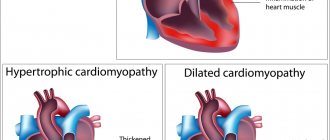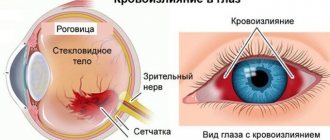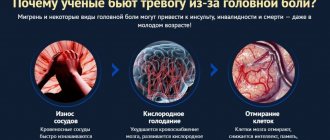A coelomic pericardial cyst is a cystic benign neoplasm filled with colorless fluid with thin walls. Such a cyst is a protrusion of the parietal layer of the pericardium, and the structure of the cells of its walls is similar to the structure of the cells of this lining of the heart. It can communicate with the pericardial cavity or be isolated, consisting of one or more chambers.
According to statistics, such neoplasms are detected quite rarely and account for only 4-10% of all mediastinal formations. As a rule, they are found in people 20-40 years old and 2-3 times more often in women over 40.
About 30-50% of coelomic pericardial cysts are small in size and the process is asymptomatic. Typically, cysts are detected by chance during fluorography during preventive examinations or when examining a patient for other diseases. In other cases, the growth of such a formation provokes compression of the heart and other organs and is accompanied by the appearance of symptoms and complications. When the coelomic cyst suppurates and ruptures, the patient may experience signs of hydrothorax or pleuropulmonary shock. In addition, experts note that such a course of pathology can cause malignancy in the areas on which the cystic fluid has poured out.
In this article, we will introduce you to the supposed causes, features of the anatomical structure, types, symptoms, methods of identifying and treating coelomic pericardial cysts. This information will help you get an idea of this pathology, and you can ask the doctor any questions you have.
A little anatomy
Externally, a coelomic cyst looks like a thin-walled cavity neoplasm with a smooth gray-yellow surface, which is filled with clear or straw-yellow serous fluid. Sometimes fatty inclusions are found on the surface of the cyst. A thin vascular network is visible on its wall.
The basis of the walls of the coelomic cyst is a connective tissue permeated with elastic fibers. Its inner surface consists of cubic or flat mesothelium, and its outer surface consists of loose vascularized connective tissue with inclusions of adipose tissue.
The thickness of the walls of coelomic cysts usually does not exceed the thickness of writing paper, and their diameter can reach 3-10 cm (sometimes more). The shape of such formations can be pear-shaped, oval or round.
The liquid found in the formation cavity usually contains very little protein and a lot of salts. In more rare cases, it contains a large amount of protein.
In 60% of patients with such formations, the cyst is located in the right cardiophrenic sinus. In 30% of cases, the tumor is localized in the left cardiophrenic sinus and only in 10% of patients is it detected in other areas of the mediastinum.
Histological analysis of the tissues of coelomic cysts reveals fibrous connective tissue with inclusions of monocytic and lymphoid cells, lined with mesothelium. Muscle fibers are not found in such formations.
Classification
Coelomic pericardial cysts can be classified according to their origin into:
- congenital;
- acquired.
According to experts, in most cases they are congenital malformations of the pericardium or pleura and are formed at different stages of intrauterine development of the fetus. In other cases, the causes of their appearance may be various post-traumatic, inflammatory, parasitic factors or processes caused by the disintegration of neoplasms.
According to the number of coelomic pericardial cysts there are:
- single,
- multiple.
Based on the number of cavities inside the cystic formation, they can be:
- single-chamber,
- multi-chamber.
In relation to the pericardial cavity, coelomic cysts are:
- communicating (either pericardial or pericardial diverticula) – communicating with the pericardial cavity;
- connected by a stalk or adhesions (or parapericardial) – the formation is associated with the pericardium by a thin stalk or a planar fusion;
- detached (extraparacardial) – the formation is isolated and not associated with the pericardium.
According to clinical manifestations, coelomic cysts are:
- asymptomatic;
- uncomplicated;
- complicated.
Possible risks
A cyst in the maxillary sinus and sinus lifting can be complicated in different ways and seriously interfere with any dental interventions by the doctor. When a cystic formation is removed, the risk of perforation of the mucous membrane of the maxillary sinus only increases, as do subsequent associated problems. It is also possible for the cyst to accidentally open and spill its contents into the sinus. This threatens further infection and the development of acute or chronic sinusitis.
When performing a sinus lift for a maxillary sinus cyst, the doctor must remember that the formation promotes the resorption of bone tissue. The thinner the alveolar bone, the less load it can bear. Therefore, any careless movement can lead to a fracture of the bone crest.
During the sinus lifting process, a barrier membrane is necessarily installed that will protect the operated area from unfavorable external factors and the additional impact of osteoclasts (cells that destroy bone).
In addition, only the safest and highest quality grafts are used in the bone grafting process with minimal risk of rejection. This precaution is due to the fact that a significant deficiency of bone tissue will not suffer additional problems in the form of poor engraftment. The doctor will not be able to perform a second operation, and he will have to look for alternative solutions.
Causes
According to one theory, a pericardial cyst can develop against the background of inflammatory heart diseases - myocarditis, pericarditis or endocarditis.
While scientists are considering two theories about the causes of coelomic pericardial cysts.
I theory
According to the first theory, the formation of such cystic formations is associated with a violation of embryoogenesis. It is believed that cysts form in areas of pericardial weakness that bulge like a diverticulum. They communicate with the pericardial cavity and in the future may separate (unlace) from it and become isolated.
In addition, scientists suggest that a coelomic cyst may be a consequence of improper fusion of embryonic lacunae. Normally, these structures unite and form the pericardial sac. However, if one of the lacunae develops unevenly, a true diverticulum or a cyst isolated from the pericardium can form. So far, this is the theory that most scientists adhere to.
II theory
A number of experts believe that the formation of a coelomic cyst can be provoked not only by disturbances of embryoogenesis, but also by some factors affecting the pericardium after birth:
- inflammatory diseases (myocarditis, pericarditis, endocarditis);
- post-traumatic hematomas of the heart;
- tumor processes;
- parasitic diseases.
Cyst in the maxillary sinus and sinus lift
Many patients are interested in the question of whether it is possible to simultaneously extract a cystic formation and perform bone grafting of the upper jaw. The answer to this question depends on several factors, which include:
- The degree of severity of bone tissue atrophy at the site of the cyst (in some cases, the deficiency is so pronounced that sinus lifting becomes impossible, and patients can only hope for the installation of removable dentures);
- The presence of an active inflammatory process (cysts are often complicated by infectious pathologies, especially sinusitis, which are a direct contraindication for surgery);
- The size of the cystic formation (small cavities can be removed immediately before sinus lifting, but if the cyst occupies the entire space of the sinus, then bone grafting is out of the question);
- The location of the cyst (if it is located on the lower wall, then problems with removal during sinus lifting usually do not arise, but if the formation is located higher, the dentist simply will not be able to reach it without injuring the walls of the sinus).
Performing a sinus lift with preliminary removal of a cystic formation is performed quite rarely and only in cases where the process has just begun to develop and was accidentally discovered by instrumental studies. The doctor must correctly weigh the benefits and risks of future surgery. Most often, patients are transferred for treatment to ENT specialists, and the sinus lift is postponed to a later time.
Symptoms
Sometimes a coelomic pericardial cyst does not manifest itself in any way, and a person may learn about its existence by chance, during examinations for other diseases. In the future, it may not increase in size, and the state of health will not suffer in any way due to its presence.
In other cases, the coelomic cyst may begin to grow, and an increase in its volume leads to compression of surrounding tissues, vessels and organs:
- atria;
- coronary vessels;
- bronchi;
- esophagus.
The patient experiences discomfort, pressure or pain in the heart area. The pain can be aching or stabbing. In their manifestation, they often resemble an angina attack.
In addition to these signs, a coelomic cyst can cause the following symptoms:
- heartbeat;
- dyspnea;
- asthmatic attacks;
- the appearance of a dry cough when changing position or exertion;
- hoarseness of voice;
- difficulty swallowing food or saliva;
- swelling of the veins in the neck;
- cyanosis;
- pain in the hypochondrium, radiating to the shoulder blade or shoulder;
- deformation of the chest in the region of the heart.
The variability and severity of these symptoms depends on the size and location of the coelomic cyst. As she grows, they become more pronounced.
When a coelomic cyst ruptures, the patient develops signs of hydrothorax and pleuropulmonary shock:
- increasing feeling of heaviness in the chest;
- increased shortness of breath and feeling of lack of air;
- the appearance or intensification of cyanosis;
- forced position: the upper part of the body is raised and tilted towards the accumulation of fluid;
- severe pallor;
- painful cough;
- coldness of hands and feet.
How to identify a cyst in the maxillary sinus?
Since cystic cavities are benign neoplasms, they do not cause any systemic manifestations. The local clinical picture manifests itself several months after the onset of the pathological process. But even its occurrence does not always become a reason to go to the doctor. Most often, maxillary sinus cysts are discovered by a dentist during a preliminary examination to perform a sinus lift or implantation.
The main clinical manifestations of cysts in the maxillary sinus:
- Painful sensations in the infraorbital region of a pressing nature (pain intensifies when changing body position);
- Discharge from the nasal passages is purulent or mucopurulent in nature, the amount of which depends on the presence and severity of the inflammatory process;
- Gradually increasing facial asymmetry (when the cyst reaches a large volume);
- Constant exacerbations of infectious lesions of the maxillary sinus;
- Swelling of the nasal passages (severe nasal congestion);
- Pain in the upper jaw (as well as: a characteristic crunch when pressed or loaded);
- Headaches (most often in the forehead or temples).
The clinical picture of cystic formations is practically indistinguishable from acute sinusitis, so doctors always differentiate these two pathologies using instrumental studies. For dental specialists, it is especially important to make the correct diagnosis, since the presence of a cyst is not always a contraindication for sinus lifting, but an acute infection does not allow surgical intervention.
Identification of cystic formations occurs by performing x-rays of the sinuses or in the process of studying the bones of the skull on a computed tomography scan. Additionally, an endoscopic examination may be prescribed, which is both diagnostic and therapeutic. Histological examination using targeted biopsy is mandatory, which allows us to have an idea of the origin of the tumor and exclude malignant oncology.
Diagnostics
In some cases, an ECG helps to diagnose a pericardial cyst.
As a rule, patients with coelomic cysts first turn to a cardiologist or pulmonologist when symptoms arise.
The presence of such a pericardial formation can be suspected based on the following examination data of the patient:
- bulging of the chest wall in the area of cyst growth;
- difficulty breathing;
- rapid pulse;
- dull sound when percussing the borders of the heart;
- vascular murmurs on auscultation.
With coelomic cysts adherent to the pericardium, changes can be detected on the ECG.
To confirm the diagnosis, the patient is prescribed the following types of studies:
- chest x-ray;
- fluoroscopy of the heart with the introduction of contrast into the esophagus;
- CT or MRI;
- Echo-KG.
If difficulties arise in diagnosis, the patient may be prescribed thoracoscopy and puncture of the cyst, followed by biochemical and electrolyte analysis of the evacuated fluid.
To eliminate errors, differential diagnosis is carried out with the following diseases:
- diaphragmatic hernia;
- neoplasms of the heart;
- hydatid cyst;
- abdominomediastinal lipoma.
Treatment
Previously, methods such as puncture or sclerotherapy were used to eliminate coelomic cysts. They gave a dubious or only temporary effect. After puncture and removal of fluid, the cyst cavity was filled with serous contents again over time, and the formation again increased in size. And the introduction of sclerosant into the cyst cavity often resulted in the sclerosing substance entering the cavity of the pericardial sac and causing the development of constrictive pericarditis.
Such imperfect methods have been replaced by other effective cardiac surgical methods for treating coelomic cysts:
- cyst removal during open heart surgery;
- thoracoscopy.
The following clinical cases may be indications for removal of a coelomic pericardial cyst:
- severe symptoms of compression of neighboring organs and tissues;
- risk of cyst suppuration or rupture;
- breakthrough of the cystic cavity into neighboring organs;
- risk of malignant degeneration of the wall.
Traditional cardiac surgery is always associated with many risks and requires the highest qualifications of the surgeon. During such an operation, the cyst is excised, and if the integrity of the pericardial sac is damaged, it is sutured. With such interventions there is always a risk of damage to the phrenic nerve, and therefore during the operation the doctor always mobilizes it.
A more modern and less traumatic method for removing coelomic cysts is thoracoscopy. To perform it, endoscopic equipment is used to remove the formation through small punctures in the chest.
The entire intervention process is accompanied by visual control of the surgical field using a video camera installed with the device. The surgeon, looking at the monitor, can control every movement of the instruments used.
Removal of a coelomic cyst using thoracoscopy is performed in the following steps:
- the doctor examines the cyst and decides on the method of its removal;
- cutting off the cyst or ligating its pedicle using a special technique is performed in close proximity to the pericardium;
- in case of large volumes of formation, a preliminary puncture is performed to remove fluid and reduce the size of the cyst;
- the cystic formation is removed gradually, and the integrity of the pericardium is not compromised.
Thoracoscopic interventions are minimally invasive and are not accompanied by such tissue trauma as classical operations. After removal of the cyst, the patient can get out of bed the next day, experience less postoperative pain and recover faster. As a rule, discharge from the hospital can occur several days after surgery.
When and how to treat
If the pericardial formation is small in size and does not cause clinical symptoms or discomfort, then treatment is not prescribed. The person is registered and his condition is checked from time to time. Measures are taken in case of the following problems:
- rapid cyst growth;
- big sizes;
- symptoms of dysfunction of the heart and mediastinal organs as a result of compression;
- high probability of complications (rupture, infection, internal hemorrhage).
Conservative therapy does not help in this case. The only possible cure is surgery.
Previously, the use of therapeutic puncture was practiced, when the contents were removed and a sclerosant was introduced into the cavity. This method is almost never used anymore, since the secretion is produced again, and the chemical can cause constrictive pericarditis if it gets past the cyst.
Removal is performed by thoracotomy or thoracoscopy. During an open operation, the formation is removed from the lining of the heart along with the walls that form it, and the area of violation of the integrity of the pericardium is sutured without harm to the functioning of the organ. Endoscopic techniques are more modern and minimally invasive methods. For this purpose, special equipment is used, which, through small incisions, allows a person to get rid of a cyst in the pericardium. The entire process is displayed on the screen, helping the surgeon to carry it out, control and correct it.
You can learn more about the method of removing a pericardial cyst using thoracoscopy from this video:
Usually such operations are successful, complications after them are extremely rare. Cases of relapses as a result of excision of the cystic cavity are not described. The prognosis is favorable; with timely intervention, complete restoration of the patient's working capacity is possible.
Case from practice
A 39-year-old patient was admitted to my hospital.
Since childhood, he had problems with his heart, which recently began to bother him almost constantly, his pulse quickened, and shortness of breath appeared. A month before treatment, he was treated in a clinic for episodic ventricular tachycardia against the background of monomorphic single extrasystoles. I took Allapinin and Amiodarone. I did not notice any particular improvement while taking the medications. After an echocardiography, a rounded cavity formation with clear walls was discovered. MRI confirmed the presence of a pericardial cyst. Treatment included radiofrequency ablation to restore normal pulses and removal of the cavity using thoracoscopy. A month after complete rehabilitation, Holter monitoring was performed. No rhythm disturbances were detected.
In this case, a double pathology was observed. The source of impulse in the left ventricle caused rhythm disturbances and episodes of tachycardia. The cause of the rapid pulse was a coelomic cyst, and it also acted as a provoking factor for arrhythmia and extrasystole.
Forecasts
The prognosis for timely surgical treatment of coelomic cysts is favorable. After a course of rehabilitation, patients fully restore their ability to work.
The lack of timely cardiac surgical care for coelomic cysts is always accompanied by the risk of developing life-threatening complications: breakthrough of the cystic cavity into the bronchus or other organs, rupture of the cyst, suppuration and inflammation of nearby tissues, malignancy of the cyst.
Coelomic pericardial cyst is a benign tumor. If the patient is asymptomatic, a patient with such a tumor can be observed by a cardiologist, who will monitor the dynamics of the growth of the cystic formation according to periodically performed X-ray, CT or MRI studies. If the cyst is large and there is a risk of developing its complications, the patient is recommended to undergo surgical treatment, which significantly improves the prognosis of the outcome of the disease.
Treatment of maxillary cysts
There are no conservative methods for treating cystic formations in the maxillary sinus. The doctor chooses one of the options for surgical intervention, which depends on the type of cyst, its location, the professional qualities of the specialist and the individual characteristics of the patient.
In modern medicine, the following operations are widely used to treat cysts:
- Open surgery. A manipulation that involves general anesthesia and has many complications and risks. The anterior wall of the maxillary sinus is opened, and the cyst is removed through the resulting hole. The main problem is the overgrowing of the access with scar tissue. This completely contradicts the physiology of the body and does not allow sinus lifting and dental implantation in this area in the future.
- Endoscopic treatment. One of the most advanced and successful in modern medicine. Using a special instrument, the doctor enters the maxillary sinus through its natural opening without damaging the bone tissue. The cyst is then sucked out or desquamated.
- Classic removal. A typical open sinus lift approach is performed, through which the cyst is removed. The operation is performed in cases where the cause of the development of the formation is a diseased tooth.
Since cystic formations are most often discovered during the preliminary examination for sinus lift, the doctor must choose a treatment method that will not interfere with further bone grafting. The final decision always belongs to the patient, so he needs to be told the advantages and disadvantages of each therapeutic technique.










